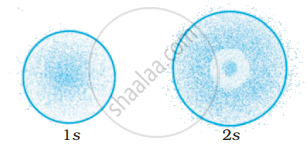Advertisements
Advertisements
प्रश्न
Match the quantum numbers with the information provided by these.
| Quantum number | Information provided |
| (i) Principal quantum number | (a) orientation of the orbital |
| (ii) Azimuthal quantum number | (b) energy and size of orbital |
| (iii) Magnetic quantum number | (c) spin of electron |
| (iv) Spin quantum number | (d) shape of the orbital |
उत्तर
| Quantum number | Information provided |
| (i) Principal quantum number | (b) energy and size of orbital |
| (ii) Azimuthal quantum number | (d) shape of the orbital |
| (iii) Magnetic quantum number | (a) orientation of the orbital |
| (iv) Spin quantum number | (c) spin of electron |
APPEARS IN
संबंधित प्रश्न
Choose the correct option.
p-orbitals are _________ in shape.
Explain the anomalous behaviour of chromium.
Write orbital notations for the electron in orbitals with the following quantum numbers.
n = 2, l = 1
Explain in brief, the significance of the azimuthal quantum number.
Write a note on ‘Principal Quantum number.
The principal quantum number (n) and magnetic quantum number (ml) for the valence electrons of rubidium atom (Z = 37) are ____________ respectively.
How many electrons in 19K have n = 3, l = 1?
The probability density plots of 1s and 2s orbitals are given in Figure:

The density of dots in a region represents the probability density of finding electrons in the region.
On the basis of above diagram which of the following statements is incorrect?
Orbital angular momentum depends on ______.
The arrangement of orbitals on the basis of energy is based upon their (n + l) value. Lower the value of (n + l), lower is the energy. For orbitals having same values of (n + l), the orbital with lower value of n will have lower energy.
Based upon the above information, arrange the following orbitals in the increasing order of energy.
5p, 4d, 5d, 4f, 6s
